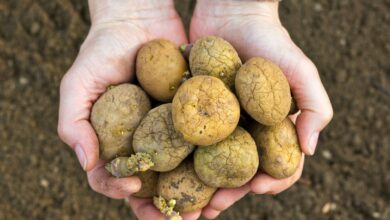Potato Charcoal Rot: Learn more about charcoal rot in potato plants

Potato charcoal rot is undeniable. The disease also affects several other crops where it decimates the crop. Only under certain conditions does the responsible fungus, which lives in the soil, become active. Crop changes and careful seed selection can limit the damage caused by this deadly disease. Read on to learn some tips to protect your potato crop.
About potato anthrax
The potato is an important economic crop and is plagued by various insect and disease problems. Charcoal rot affects tubers and lower stems. It is a fungal disease that also affects more than 500 plants, including beans, corn and cabbage. In potatoes, anthrax causes tubers that are not edible and cannot even be used for seed.
In many crops, charcoal rot reduces yield and causes obvious damage to the stems. In potatoes, the first signs are in the leaves, which wilt and turn yellow. The next to be infected are the roots and then
tubers. When the stem develops small black and ashen fungal structures, the plant is too sick to be saved.
Potatoes with charcoal rot show signs at harvest. Tubers are first infected at eye level. Grey water-soaked lesions appear and slowly turn black. The inside of the potato pulp becomes pasty and pink and then blackens. Sometimes only a few plants in a crop are affected, but the fungus spreads easily.
Control of potato carbon rot
Charcoal rot in seed potatoes develops from Macrophomia phaseolina . It is a soil-borne fungus that overwinters in the soil and in plant waste. It is most common in hot, dry weather. Soil types that favour the development of potato charcoal rot are sandy or sandy soils on hills or compacted areas. These sites tend to dry out quickly and favour the development of the disease.
The fungus can also spread through infected seeds. There are no resistant cultivars, so certified disease-free seed is essential for the control of seed potato anthrax. Stress also promotes disease formation. Plants often do not show signs until the end of the season, when temperatures are higher and higher, and after flowering.
It is not only important to select disease-free seeds or plants, but also to rotate every two years with an unfavourable plant such as wheat. Allow plenty of circulation between plants to avoid crowding and stress associated with such growing conditions.
Maintain average soil moisture. Avoid ploughing and use organic mulch around potatoes to conserve moisture. Provide sufficient phosphorus and potassium as well as nitrogen to promote plant growth and overall health.
Since no fungicides are registered for the control of potato smut rot, tubers from an infected crop should never be saved for next year’s seed.




